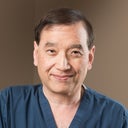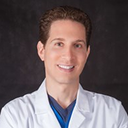I am an asian male whose right eye has no crease, while my left eye has quite a high crease. It looks very unbalanced when looked up close. I have noticed this problem since I was a little kid. Is it possible to make it uneven?
Answers (10)
From board-certified doctors and trusted medical professionals
Dr. Brian K. Machida, MD, FACS

Dr. Brian K. Machida, MD, FACS
Board Certified Facial Plastic Surgeon
Answer
Dr. James R. Gordon, MD, FACS, FAAO

Dr. James R. Gordon, MD, FACS, FAAO
Oculoplastic Surgeon, Board Certified in Ophthalmology
Answer
Dr. Charles S. Lee, MD, FACS

Dr. Charles S. Lee, MD, FACS
Board Certified Plastic Surgeon
Answer
Dr. Kenneth D. Steinsapir, MD

Dr. Kenneth D. Steinsapir, MD
Oculoplastic Surgeon, Board Certified in Ophthalmology
Answer
Dr. Leo Kim, FRACS(Plast), MS(Plast), MBBS(Hons)
Dr. Leo Kim, FRACS(Plast), MS(Plast), MBBS(Hons)
Specialist Plastic Surgeon
Answer
Dr. Jeffrey M. Joseph, MD
Dr. Jeffrey M. Joseph, MD
Oculoplastic Surgeon, Board Certified in Ophthalmology
Answer
Dr. Eric In Choe, MD
Dr. Eric In Choe, MD
Board Certified Plastic Surgeon
Answer
Dr. Chase Lay, MD

Dr. Chase Lay, MD
Board Certified Facial Plastic Surgeon
Answer
Dr. William Portuese, MD
Dr. William Portuese, MD
Board Certified Facial Plastic Surgeon
Answer
Dr. Kimberly Lee, MD
Dr. Kimberly Lee, MD
Facial Plastic Surgeon, Board Certified in Otolaryngology – Head and Neck Surgery
Answer
More Double Eyelid Surgery Questions
See all Double Eyelid Surgery Q&AWE SEND PRETTY
EMAILS
What’s trending? Who’s turning heads? Which TikTok myths need busting? We’ve got you. No fluff, no gatekeeping—just real talk. Get our free, unfiltered newsletter.